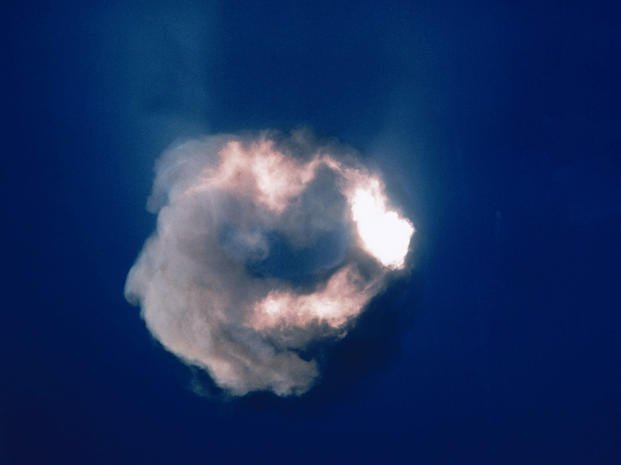
- In 1957, the US military conducted an test of an unguided nuclear rocket.
- Five Air Force officers reportedly volunteered to stand directly underneath the test.
- All five men are said to have later developed cancer.
The history of US nuclear testing is full of bad ideas, and among them is undoubtedly five US military men standing at ground zero during an atmospheric test in the late 1950s.
While Christopher Nolan’s new film “Oppenheimer” is prompting plenty of discussion about the US military’s early nuclear bomb tests and the effects of radiation, it doesn’t capture in full some of the reckless oddities of nuclear testing.
On July 19, 1957, the Nevada Test Site conducted a test of an unguided nuclear air-to-air rocket. The purpose of the weapon — known as Genie — was to counter potential nuclear-armed Soviet Union bombers, according to a Popular Mechanics report. The test was concerned with whether or not the rocket could be effectively aimed at and hit a bomber without a guidance system.
Nuclear air-to-air rockets are a questionable concept, but a number of unusual experiments were conducted at the Nevada Test Site during the early years of the Atomic Age. A really odd thing about this test, the “John” shot of the Operation Plumbbob test series, is that for some reason, a group of five US Air Force officers decided to plant themselves at ground zero of the site, standing 18,500 feet directly below where the Genie rocket would ultimately explode.
The men — identified by NPR as Col. Sidney Bruce, Lt. Col Frank Ball, Maj. Normal “Bodie” Bodinger, Maj. John Hughes, and Don Luttrell — weren’t required to be involved in or even attend the test. Popular Mechanics reported they volunteered.
Although it’s not clear what the purpose was, a theory has been put forward that it was intended to help alleviate any concerns about nuclear fallout from nuclear air-to-air missiles.
What is clear, though, is how the “John” shot went down, thanks to US government footage shot by a man named George Yoshitake.
In the footage, the five men stand at what they’ve labeled “Ground Zero: Population 5,” looking upwards at the F-89 Scorpion interceptors flying above them.
A voiceover countdowns before the Genie launches and explodes, causing a bright light that prompts the five men to shield their eyes. And then the sound of the explosion startles the men before the video shows the fireball from the nuke.
In the aftermath, the five men shake hands, congratulating each other.
“My only regrets right now,” Col. Bruce says, “are that everybody couldn’t have been out here at ground zero with us.”
After the “John” experiment, the Genie was never tested again. Decades later, civilian cameraman Yoshitake told Fox News about the incident, saying he hadn’t volunteered for the shoot.
“I had a call saying they needed me out for a special test,” Yoshitake said, according to The Rafu Shimpo, a bilingual Japanese-English newspaper.
“I found out when I got to Nevada that I was going to be standing at Ground Zero. It was going to explode 10,000 feet above my head… I asked what kind of protective gear I was going to have, and they said, ‘Nothing.’ I had a baseball cap with me, and I said, ‘I better wear that just in case.'”
He said that he and the five Air Force officers present developed cancer later in life, though it’s unclear if it was the result of that test or others. Yoshitake developed stomach cancer. He died on October 17, 2013, at the age of 84 due to complications from a stroke.
NPR attempted to tracked down the other five men but couldn’t confirm what exactly happened to them or what types of cancers they may have developed. The outlet was only able to determine when some of them died.
Yoshitake told The New York Times in 2010 that few of his fellow “atomic cameraman” — photographers and videographers who documented US nuke tests in Nevada and the Pacific Ocean — were still alive, but many apparently paid a tragic price for their work.
“Quite a few have died from cancer,” he said. “No doubt it was related to the testing.”





